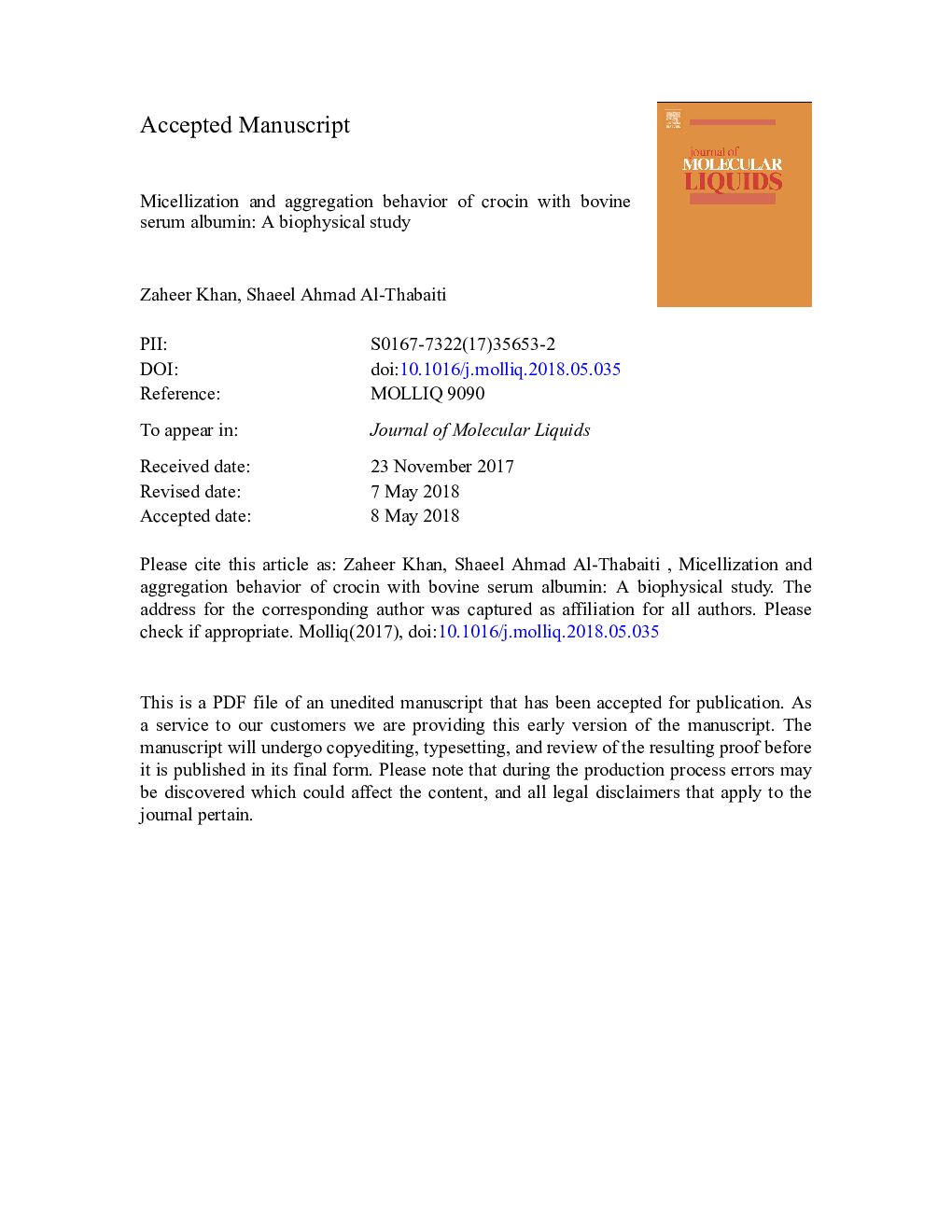| Article ID | Journal | Published Year | Pages | File Type |
|---|---|---|---|---|
| 7842002 | Journal of Molecular Liquids | 2018 | 35 Pages |
Abstract
The interaction of bovine serum albumin (BSA) with a naturally occurring surfactant (trans-crocetin di-(β-D-gentiobiosyl) ester, crocin) was studied under biophysical conditions by using various techniques such as surface tensiometry, UV-visible spectrophotometery and fluorescence. Upon the addition of a small amount of BSA, the λmax of a crocin dispersion in water shifted to lower wavelengths, indicating either a ground state complex formation between BSA and crocin or solubilization of BSA into the micelles of crocin. The critical micelle concentration (cmc) of crocin decreases in the presence of increasing BSA concentrations. The complex formation constant (KC), surface pressure Ïcmc, maximum surface excess (Îmax), the minimum surface area per molecule (Amin), enthalpy (ÎH0), entropy (ÎS0), and Gibbs free energy change (ÎG0) were calculated for the BSA-crocin interactions. BSA fluorescence was quenched in the presence of crocin. The fluorescence data were used for determining the apparent association constant (Kapp), the Stern-Volmer constant (KSV), the bimolecular rate constant of the quenching process (kq) and the thermodynamic parameters.
Related Topics
Physical Sciences and Engineering
Chemistry
Physical and Theoretical Chemistry
Authors
Zaheer Khan, Shaeel Ahmad Al-Thabaiti,
